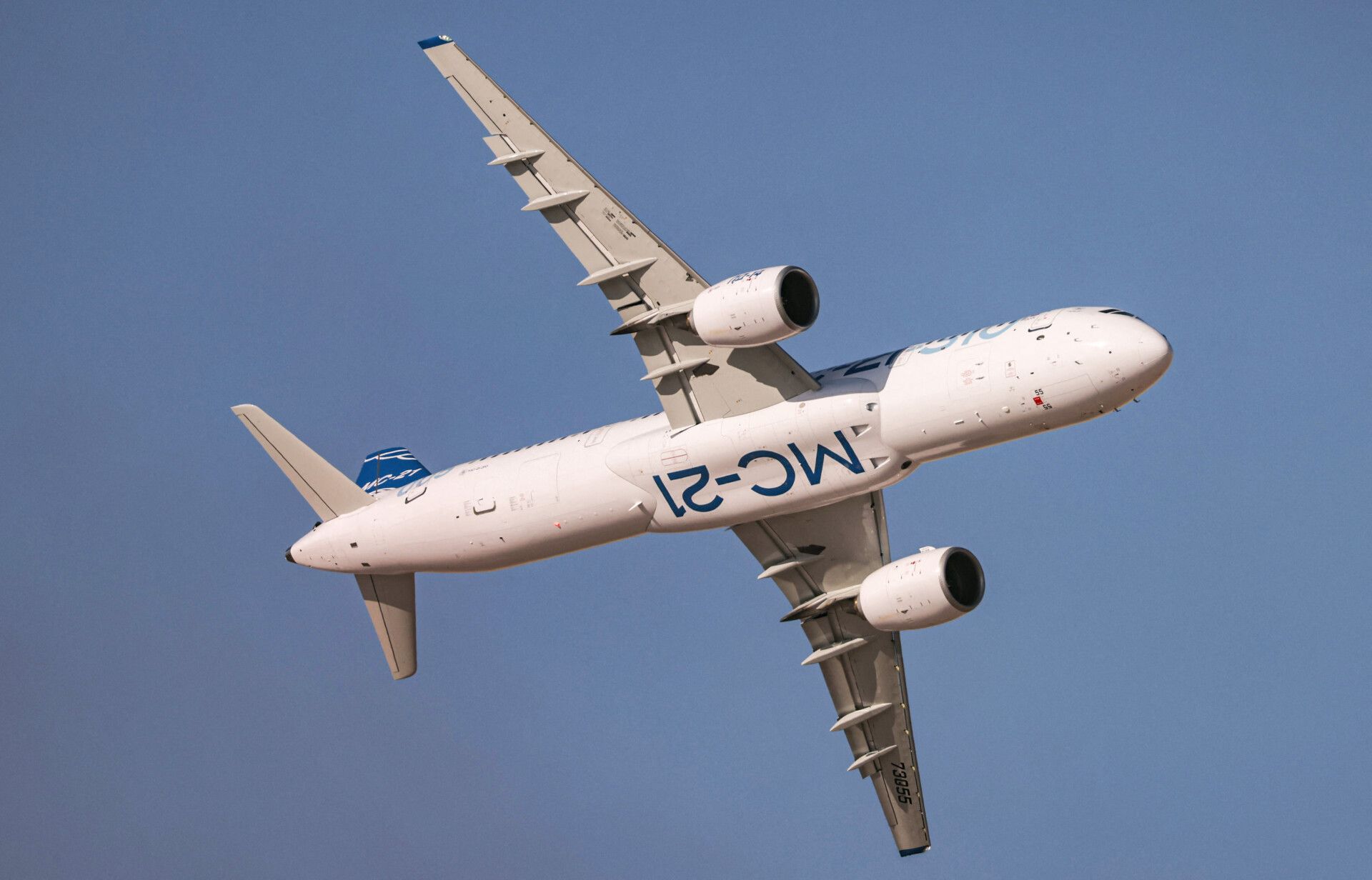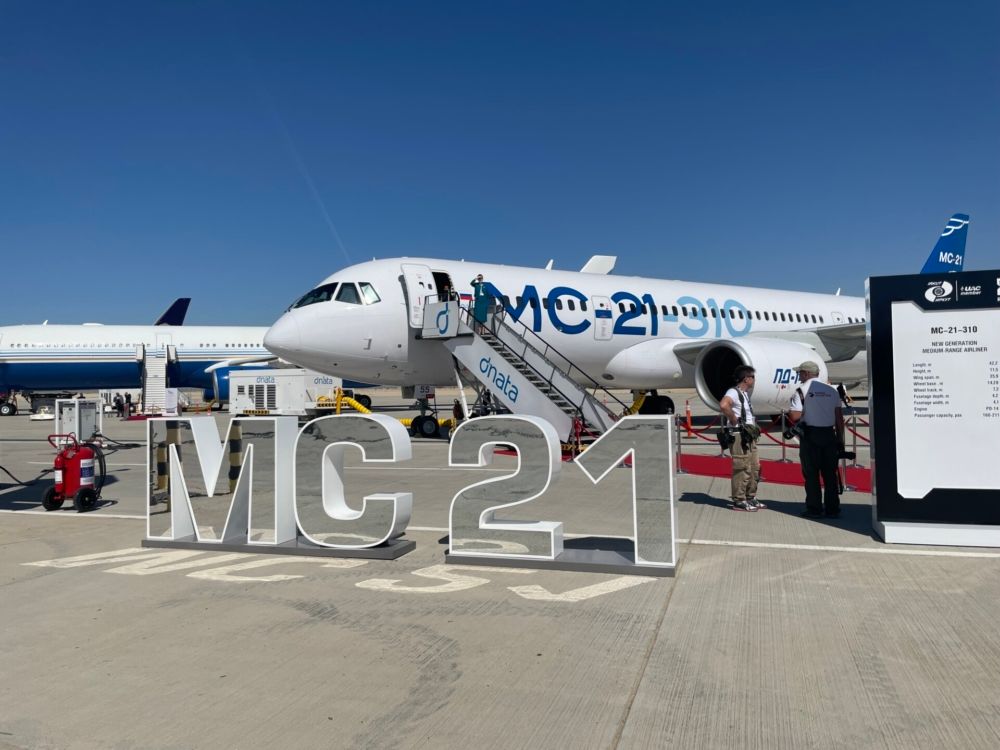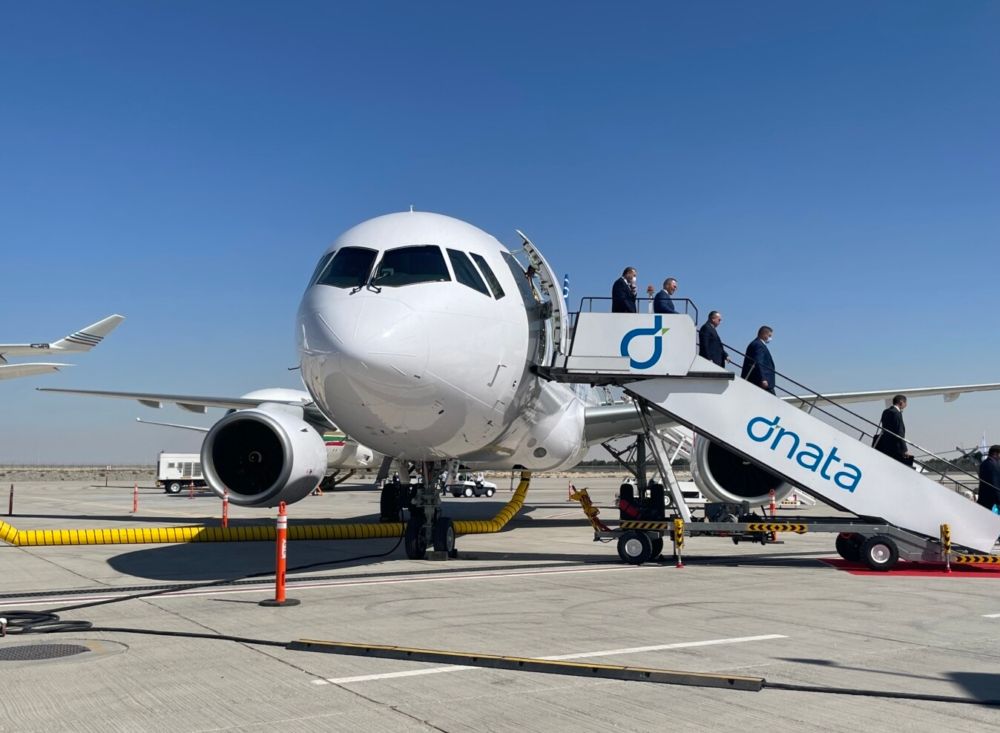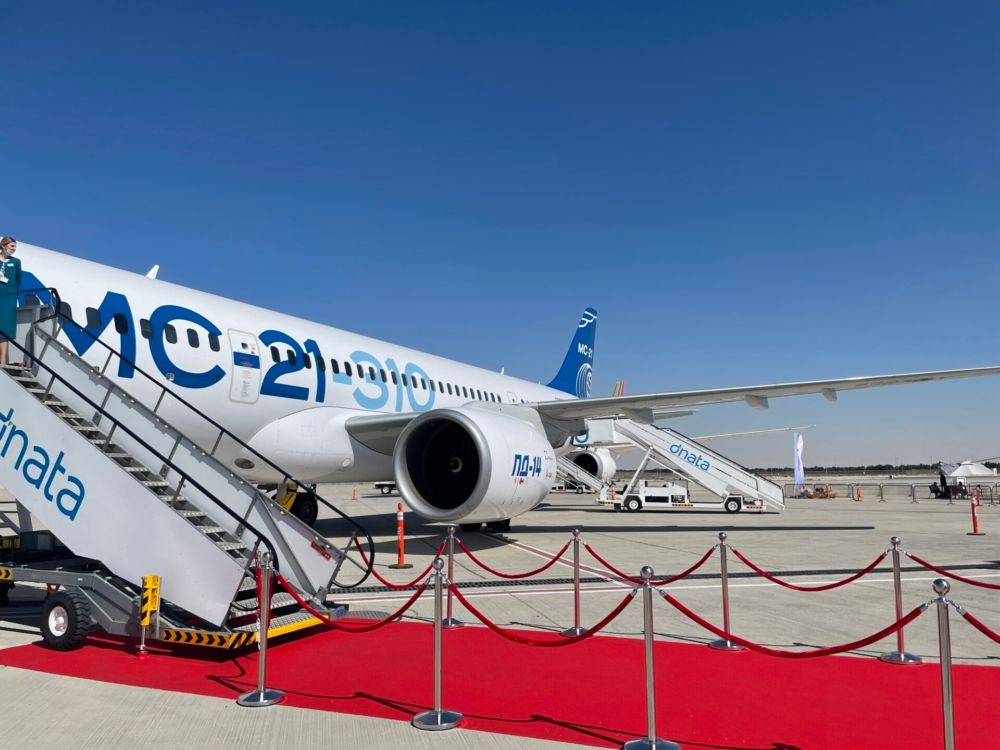The Russian-built narrowbody MC-21 has, like so many new aircraft programs, been beset by delays. Some of these are par for the course, but some have been entirely out of Russia’s hands. Simple Flying spoke to Victor Kladov, Head of International Cooperation & Regional Policy at Rostec, about the root causes of these delays and how, in the long run, it could be a good thing for Russia that they happened.
Delays to the MC-21
Russia’s answer to the 737 MAX and A320neo is on track to achieve certification imminently. The MC-21 has been undergoing flight tests since 2019 with its original Pratt & Whitney powerplants, and since this time last year with its Russian-made PD-14 alternatives. The manufacturer maintains it will be certified before the end of the year – great news, but still incredibly behind the original schedule.
When the MC-21 program launched in 2007, Irkut had planned for a 2016 introduction. While some delays to new airplane programs are about par for the course, this was a pushback of epic proportions. Airlines like Aeroflot, who were expecting early deliveries of the type, were left disappointed.
But Rostec, owner of Irkut, said that no compensation would be paid. Speaking to TASS (as reported in ch-aviation) in mid-2019, Sergey Chemezov, chief executive of Rostec Corporation, said,
“I don’t think Aeroflot should impose any fines because it is an unavoidable event in that sanctions applied by another state are classified as force-majeure. [...] So far we haven’t discussed this matter, but we have sent the relevant letter to Aeroflot.”
So how did sanctions delay the MC-21 so significantly, and how did Russia work around them?
What’s the holdup?
Essentially, as Chemezov outlined two years ago, the program was stunted due to sanctions imposed by the US on supply of parts and materials to Russia. First imposed in 2014 in response to the annexation of Crimea and then later due to the war in Eastern Ukraine, sanctions were initially focused on products that could be used in military development.
However, the sanctions were expanded to include civil aerospace programs under Trump, which stopped the MC-21 in its tracks. Simple Flying spoke with Victor Kladov, Head International Cooperation & Regional Policy at Rostec, who added some color to the delays. He said,
“We had planned to go into serial production in 2019. And then, just half a year before that, America placed sanctions on a small company that supplied composite thread to the manufacturer. The thread is used to make the composite wing. So, it was a very unfair blow at the last moment, because we were dependent on this composite material. This delayed the whole program by almost two years.”
Kladov explained his frustration with the reasoning behind putting a 100% civilian product on the sanctioned list. In the eyes of the US, The MC-21 was part of Rostec, part of Irkut, and Irkut made not only this passenger airliner but also the Sukhoi 35, Russia’s current flagship fighter jet. As such, the MC-21 ended up being slapped with the same sanctions as Russia’s military supply chain.
The silver lining
The critical element that caused the unavoidable delay was the composite thread, used in the wing for the narrowbody jet. The MC-21 has a very interesting wing manufacturing process, unlike anything previously used in civil aviation. Most composite structures for aircraft build-up resin in layers, before baking the entire thing in an autoclave.
But over in Russia, Irkut is using an ‘out of autoclave’ process to produce the wing of the MC-21. This involves placing the layered resin in a closed mold, and then applying vacuum, pressure, and heat. The end result is a strong and durable wing that Irkut has managed to make very slender and light.
Before the sanctions, Irkut was importing all the resin it needed for the manufacturing process. With no imports available, Russia was forced to invest in its own composite manufacturing capabilities. Kladov said,
“We invested into Russian R&D. We set up a plant, and now we have 100%, Russian made composite material … And we produced an excellent engine – the PD-14 engine. It taught us a lesson. A lesson that you can not be entirely 100% dependent, because you never know what happens next, in this turbulent world.”
AirInsight notes that the first Russian-made wing for the MC-21 was delivered in May this year. This represents a significant milestone for Russia’s technical capabilities, something that will prove to be a boon not only for the MC-21[ege_cards_related id="0"] but also for the CR929 and other future aircraft. With Russian engines and a Russian wing, the next step will be to develop Russian avionics technology for further self-sufficiency in future aerospace developments.




